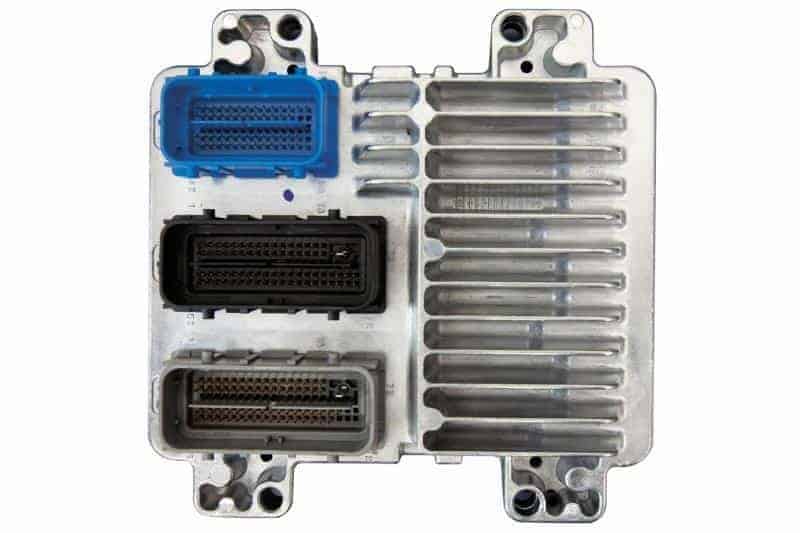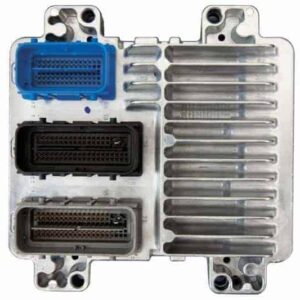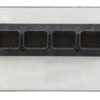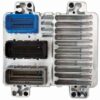Restore Your Cobalt’s Brain and Get Back on the Road
Is your 2006 Chevrolet Cobalt giving you headaches? Unexplained stalling, a stubborn check engine light, or a frustrating no-start condition can often point to one critical component: the Engine Control Module (ECM). As the central computer of your vehicle, when the ECM starts to fail, it can cause a cascade of baffling issues. This isn’t just an inconvenience; it’s a reliability problem. You need a solution that’s not only effective but also straightforward. That’s exactly what this pre-programmed 2006 Cobalt ECM offers—a direct, reliable fix that restores your vehicle’s performance and your peace of mind.
From the Diagnostic Bay: The Ghost in the Machine
I remember a 2006 Cobalt that came into my shop a few years back. The owner was at his wit’s end. The car would run fine for days, then suddenly start idling rough and lose power on the highway. He’d already replaced the spark plugs and a couple of sensors, but the problem persisted. We hooked up the scanner and found no hard codes, just some intermittent communication faults. After checking the wiring harness for the third time, we focused on the ECM. On a hunch, we gently tapped on the module while the engine was running, and it immediately stumbled. That confirmed it: an internal failure in the ECM was the ghost in his machine. We installed a VIN-programmed module just like this one, and the car ran perfectly. It’s a classic example of how a failing ECM can mimic other problems, making a reliable replacement the only true solution.
Is Your Cobalt Showing These Signs of ECM Failure?
A failing engine computer can manifest in numerous ways. If you’re experiencing any of the following, a faulty ECM could be the culprit. Over my 20+ years, these are the most common symptoms I’ve seen linked directly to a bad module:
- ✔ Check Engine Light is On: Often with codes like P0601 (Internal Control Module Memory Check Sum Error), P0606 (ECM/PCM Processor Fault), or U-series communication codes.
- ✔ Engine Stalling or Misfiring: The engine may stall for no apparent reason, either while driving or at idle.
- ✔ No-Start or Hard-Start Condition: The engine cranks but refuses to start, or takes an unusually long time to fire up.
- ✔ Poor Performance and Fuel Economy: A noticeable drop in power, acceleration, and miles per gallon.
- ✔ Erratic Transmission Shifting: The ECM plays a key role in transmission function, and a failure can lead to harsh or incorrect shifts.
- ✔ Apparent Failure of Other Systems: The ECM can fail to communicate with other modules, making it seem like other parts have failed when they haven’t.
A Straightforward Guide to Installation
Replacing the ECM on your Cobalt is a manageable job for a DIYer. This module is located in the left-front of the engine compartment. Here’s a simple process to follow:
- Safety First: Always disconnect the negative terminal from your vehicle’s battery before starting any electrical work.
- Locate the ECM: Open the hood and find the ECM on the driver’s side of the engine bay. It’s a metal box with large electrical connectors.
- Disconnect the Harnesses: Carefully release the locking tabs on the electrical connectors and pull them straight out from the module. Avoid pulling on the wires themselves.
- Remove the Old Module: Unbolt the mounting hardware that secures the ECM to its bracket and remove the old unit.
- Install the New ECM: Mount your new, pre-programmed ECM in place and secure it with the original hardware.
- Reconnect Everything: Firmly plug the electrical connectors back into the new module until they click into place. Reconnect the negative battery terminal.
- Perform Security Relearn: In many cases, you will need to perform a simple security relearn procedure. This typically involves turning the key to the ‘ON’ position for 10-15 minutes, then off, and repeating two more times before starting the engine. This allows the new ECM to sync with your vehicle’s anti-theft system.
Verified Compatibility Across GM Models
This ECM, part number 12607096, is a versatile component used across a wide range of General Motors vehicles. We ensure it’s flashed specifically for your car. Please verify your model and options below. This module is a direct replacement for service numbers: 12590032, 12602044, 12603530, 12605843, 12607096, 12630457, and 19210737.
Fits Select Models Including:
- Chevrolet Cobalt: 2006 (2.4L, VIN B)
- Chevrolet HHR: 2006 (2.4L)
- Chevrolet Impala / Monte Carlo: 2006 (3.5L, 3.9L)
- Chevrolet Trailblazer / GMC Envoy: 2007-2009 (4.2L, 5.3L, 6.0L – check ID)
- Pontiac G6: 2006-2009 (3.6L – check ID)
- Saturn Ion: 2006 (2.4L)
- And many more models from Buick, Cadillac, Hummer, Isuzu, and Saab. Please use the fitment chart to confirm.
Your Questions Answered
Frequently Asked Questions
Do I need to get this ECM programmed by a dealer?
No. This is the biggest benefit we offer. We program the module to your vehicle’s specific VIN before we ship it. It arrives ready for installation, saving you a trip to the dealership and their expensive programming fees.
What is a VIN and how do I provide it?
The VIN (Vehicle Identification Number) is your car’s unique 17-digit serial number. You can find it on the driver’s side of the dashboard (visible through the windshield) or on the sticker in the driver’s side door jamb. After you purchase, you will need to send us your VIN so we can program the module correctly.
Is this a simple plug-and-play installation?
Yes, the physical installation is plug-and-play. However, as with most GM ECM replacements, you will likely need to perform a security relearn procedure so the module can sync with your car’s anti-theft system. This is a simple process you can do yourself in about 30 minutes with just your car key.
Will this fix my check engine light?
If your check engine light is on due to an internal ECM failure (like codes P0601, P0602, P0606), then yes, this part is the correct fix. It’s crucial to properly diagnose the issue first to ensure the ECM is the root cause and not a faulty sensor or wiring problem.
How can I be sure my original ECM has failed?
The best way is through professional diagnosis. However, key indicators include specific ECM-related trouble codes, no communication with a scan tool, and ruling out all other possible causes (like sensors, wiring, and fuel delivery) for symptoms like stalling or a no-start condition.



